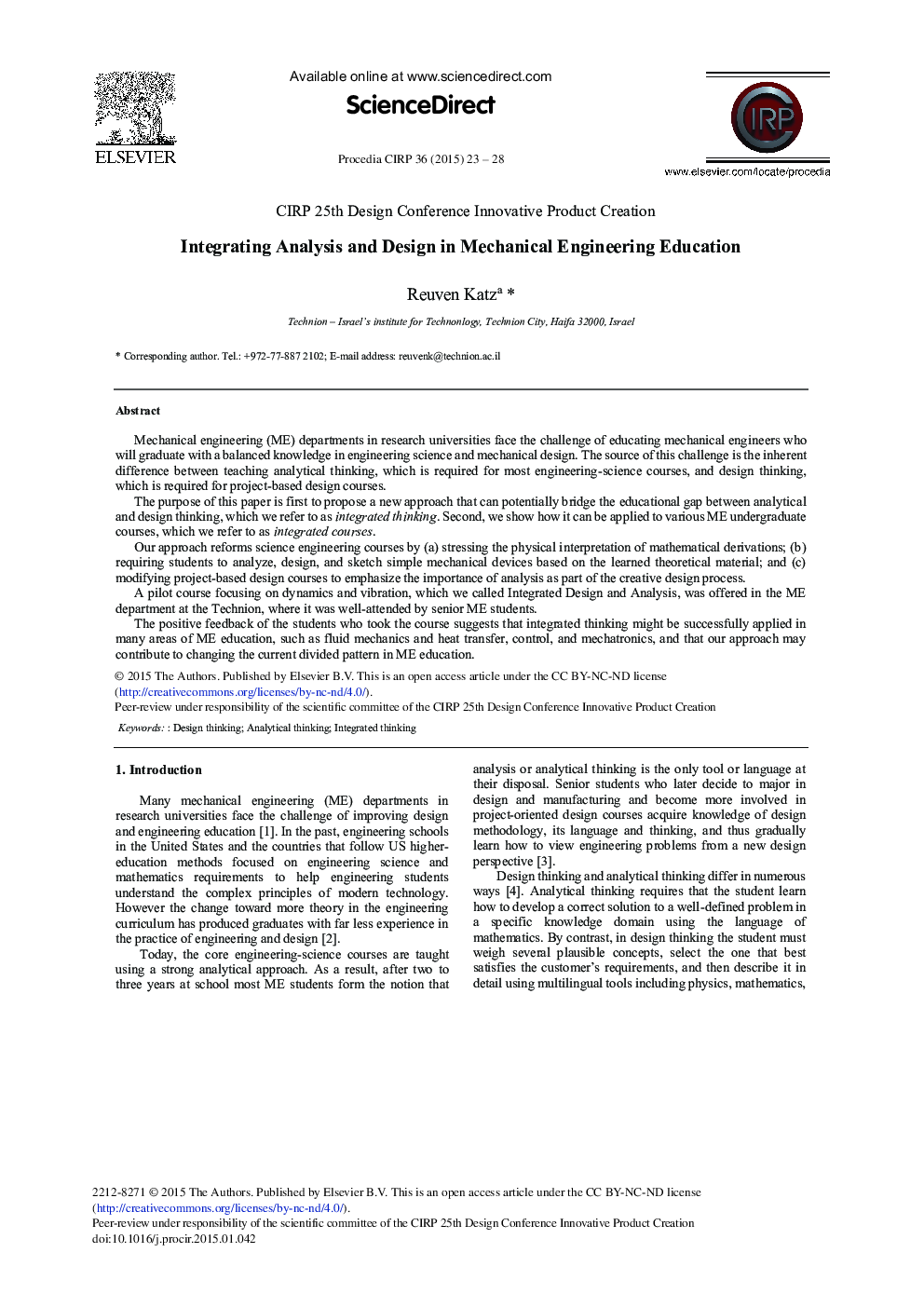| Article ID | Journal | Published Year | Pages | File Type |
|---|---|---|---|---|
| 1699387 | Procedia CIRP | 2015 | 6 Pages |
Mechanical engineering (ME) departments in research universities face the challenge of educating mechanical engineers who will graduate with a balanced knowledge in engineering science and mechanical design. The source of this challenge is the inherent difference between teaching analytical thinking, which is required for most engineering-science courses, and design thinking, which is required for project-based design courses.The purpose of this paper is first to propose a new approach that can potentially bridge the educational gap between analytical and design thinking, which we refer to as integrated thinking. Second, we show how it can be applied to various ME undergraduate courses, which we refer to as integrated courses.Our approach reforms science engineering courses by (a) stressing the physical interpretation of mathematical derivations; (b) requiring students to analyze, design, and sketch simple mechanical devices based on the learned theoretical material; and (c) modifying project-based design courses to emphasize the importance of analysis as part of the creative design process.A pilot course focusing on dynamics and vibration, which we called Integrated Design and Analysis, was offered in the ME department at the Technion, where it was well-attended by senior ME students.The positive feedback of the students who took the course suggests that integrated thinking might be successfully applied in many areas of ME education, such as fluid mechanics and heat transfer, control, and mechatronics, and that our approach may contribute to changing the current divided pattern in ME education.
